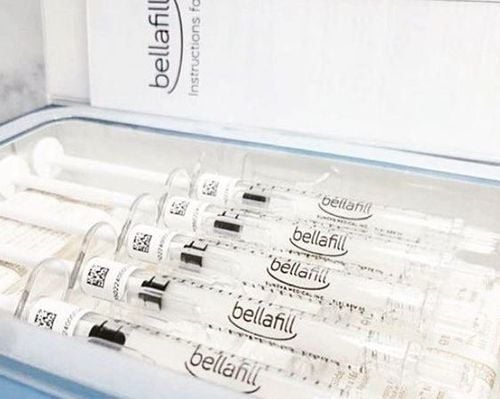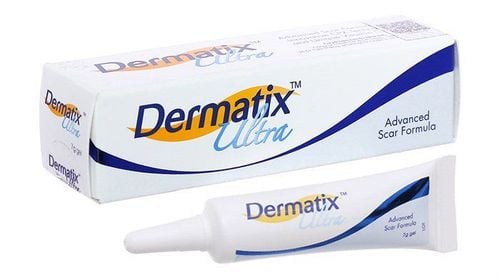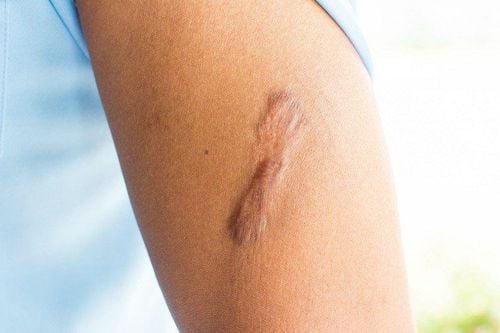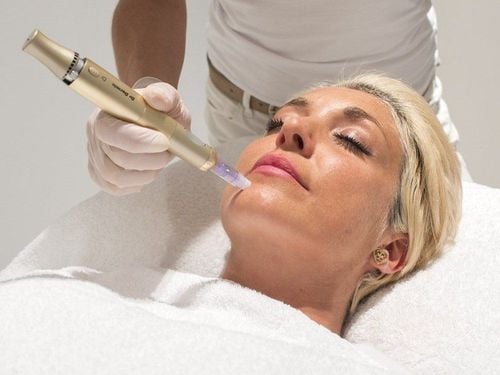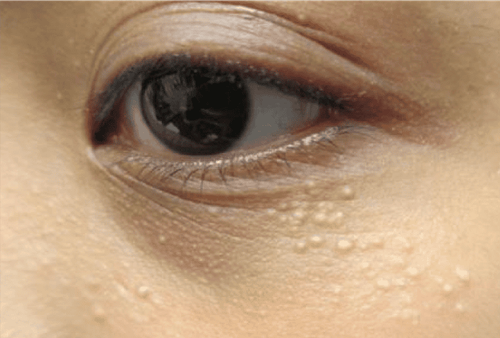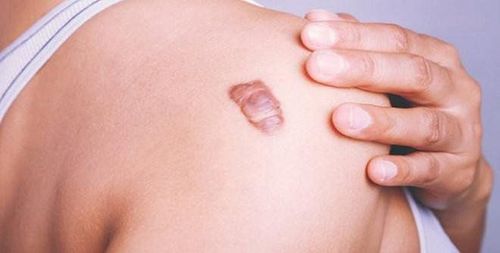This is an automatically translated article.
Skin is a large organ that covers the entire outer surface of the body. This organ is also very sensitive, any burn, minor surgery, surgery can leave scars and they will never go away completely. With the development of modern medicine and the current cosmetic industry, there are many treatment methods that help reduce the size or change the appearance of some types of scars.
1. Scar formation
Scars are a natural part of the wound healing process after an incident or injury. The appearance and treatment of scars depends on many factors such as:
Scar depth Wound size Location Age Gene Gender ....
MORE: Methods of curing keloids
2. Common scar classification
A scar on the body can be unsightly and make you lose confidence. Therefore, you should see a dermatologist for examination and diagnosis. This will help your dermatologist diagnose the type of scar you are experiencing and recommend the most effective scar treatment. The following are common types of scars:
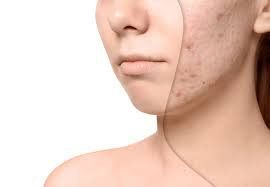
Hướng dẫn phân loại sẹo thường gặp
2.1. Keloids
Keloids forming are a sign of a wound that is healing. This type of scarring is most common in people with dark skin. In addition, if you have large keloids on your back and shoulders but don't remember you have injured your skin, you need to be cautious. This could be a sign of skin cancer. Therefore, you need to see a dermatologist to determine if this is just a common keloid or skin cancer. Sometimes, skin cancers develop into scars.
You can reduce your risk of skin cancer by always wearing sunscreen when clothing won't cover the scar. To give you the protection you need, always use a broad-spectrum sunscreen with an SPF of 30 or higher. You should also avoid tanning beds to reduce your risk of developing skin cancer.
2.2. Shrinkage scars
This is a sign of a serious burn injury. These scars stretch the skin, which can reduce your ability to move. Contracture scars can also go deep, affecting muscles and nerves.
2.3. Hypertrophic scars
These are keloid scars, which are red in color similar to keloids. But hypertrophic scars do not extend beyond the boundaries of the lesion.
2.4. Acne Scars
Severe acne, inflammation can cause scars. There are many types of acne scars, from deep pitted scars to angular scars. Acne scar treatment options depend on the type of acne scar you have.
In short, scars are very complex, to be treated safely and effectively, you need to inform your doctor about your health situation and the type of scar you have.
SEE ALSO: Local injection of the lesion effectively cures keloids
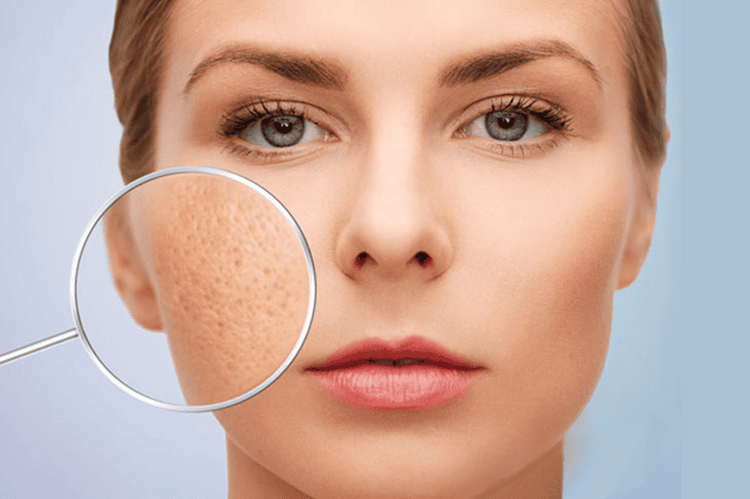
Sẹo mụn là loại sẹo thường gặp nhất ở cả nam và nữ giới
3. Scar Treatment
Different types of scars will have different treatments. Your age and length of time with scarring can also affect the type of treatment that is best for you. Here are some effective scar treatments:
3.1. Treatments include steroid injections to reduce inflammation
Corticosteroid injections are also widely used to treat keloids and hypertrophic scars. Accordingly, the dermatologist will inject corticosteroids directly into the scar to:
Reduce the size of the keloid or hypertrophic scar Reduce the symptoms of itching and pain Studies show that corticosteroid injections can reduce the size of the scar. scars of 50% or more. To get results, most people need more than one treatment. Possible side effects when applying corticosteroid injections such as: scarring may return, the skin is thinner, and dark spots appear at the injection site.
3.2. Apply silicone gel sheet to smooth the scar
Studies show that silicone gel sheets are more effective in scar treatment than silicone ointments. These gel sheets are thin and self-adhesive. You should use them after the wound has healed. To get results, you must apply a gel sheet every day, regularly for many months. Using silicone gel sheets in the same place every day can cause side effects such as: rash, itching,...
3.3. Cryotherapy (freezing therapy using liquid nitrogen)
This treatment freezes the scar, slowly destroying the scar tissue. Dermatologists have used this treatment for many years to reduce the size of keloids and improve pain, itching, stiffness, and skin discoloration.
After one treatment, cryotherapy can reduce scar size by 50% or more. To further reduce the size of the scar, a corticosteroid injection or 5-FU may also be given.
3.4. Scar surgery
During this treatment, the dermatological surgeon will cut the scar. Scar surgery helps to reduce the size of a keloid, increasing your mobility if the scar restricts your movement
Although surgery is quite effective, it is often only an option when above-mentioned treatments are not available. successful. Scars may return after a period of surgery. To prevent this from happening, the surgeon usually leaves an outline of the keloid.
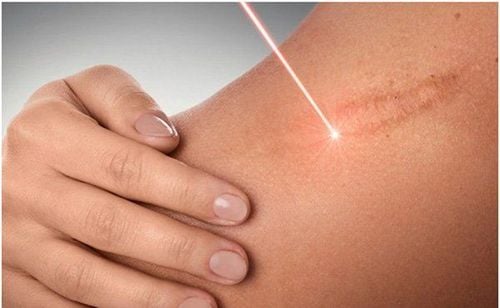
Phẫu thuật có thể không điều trị sẹo được dứt điểm
3.5. Laser therapy
Studies show that laser therapy or pulsed dye laser can be effective for scar treatment patients. To give patients the best results from laser treatment, dermatologists may also incorporate corticosteroid injections or 5-FU into the scar.
3.6. Radiotherapy
Studies show that radiation therapy can be effective in treating scars such as:
Reduce keloids when other treatments have failed Reduce itching and discomfort Reduce the risk of scars returning after scar surgery Very few patients receive radiation therapy because of fears it may cause cancer years later. Other possible side effects of this procedure include: dark spots, itchy red skin, and swelling.
Scars cause a loss of aesthetics, making patients lose confidence when communicating as well as many normal activities right away. To treat scars, you need to have an in-depth examination, determine the type of scar and consider appropriate treatment methods to ensure maximum safety.
Please dial HOTLINE for more information or register for an appointment HERE. Download MyVinmec app to make appointments faster and to manage your bookings easily.
References: webmd.com, aad.org, healthline.com




